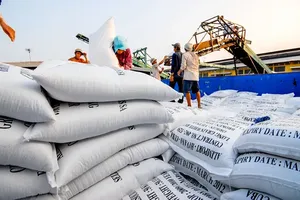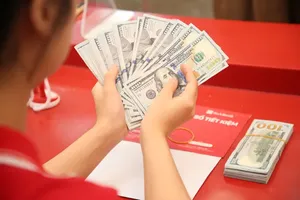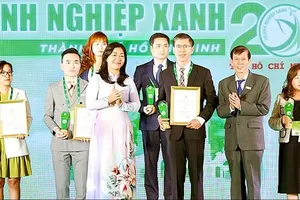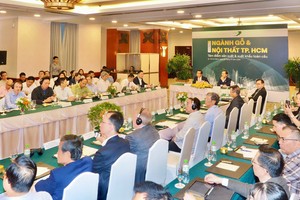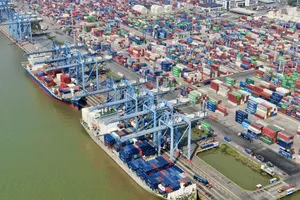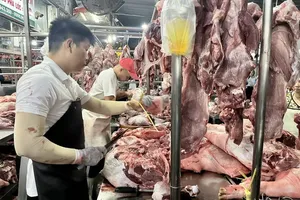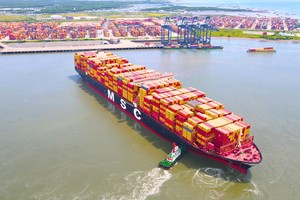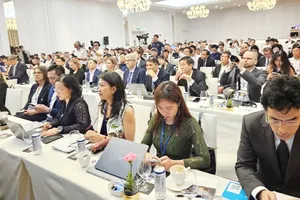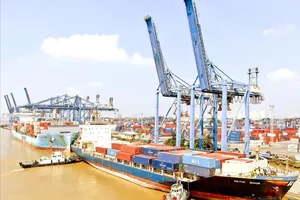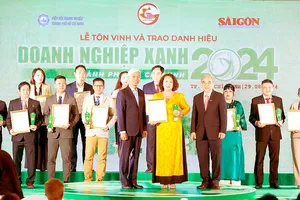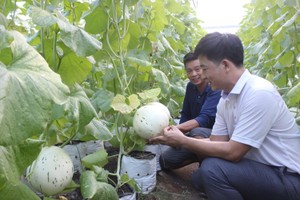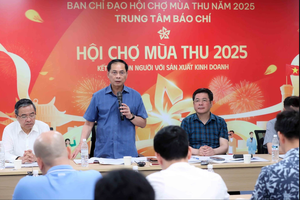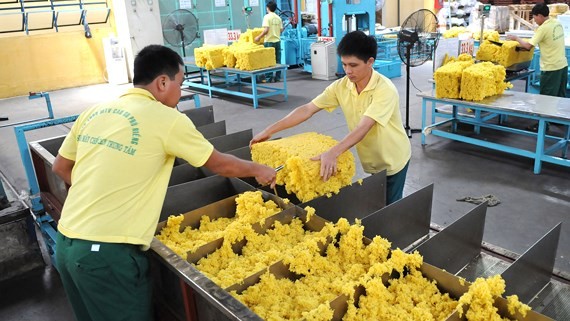
According to the General Department of Vietnam Customs, since Vietnam officially became the Association of Southeast Asian Nations (ASEAN) membership in 1995, goods trade relations between the country and ASEAN member nations have been developed strongly.
The goods trade value between Vietnam and ASEAN nations totaled US$49.53 billion in 2017, up 19.6 percent over 2016 and accounting for 11.7 percent the country’s total export import turnover.
ASEAN is the fourth largest export market of Vietnam after the EU, the US and China. In 2017, the cargo export turnover of Vietnamese firms to ASEAN hit $21.51 billion, increasing 23.9 percent over 2016 and making up 10.1 percent of the country’s total export turnover.
Major export items are phones and parts, computers-electronic products and components, steel, machine-equipment-components, transport means and components, garment and textile, crude oil and petrol.
In the opposite direction, Vietnam’s import from ASEAN was worth at $28.02 billion, up 16.4 percent over 2016 and accounting for 13.3 percent of the country’s import turnover.
With the market of 660 million population and Gross Domestic Product (GDP) reaching VND2,551 billion in 2016, ASEAN is forecast to become the world’s fourth largest economy by 2030. ASEAN Economic Community (AEC) is hopeful to open many new opportunities for Vietnamese firms.
Vietnam has completed a tariff abolishment roadmap in AEC. Therefore businesses have chances to export products which they are in strength and broaden the market. Moreover, they have also enjoyed import tariff reduction.
To the Chinese market, last year bilateral trade reached $93.7 billion. China is the largest trade partner of Vietnam. Export to the market posted a year on year growth rate of 61.5 percent to hit $35.5 billion in 2017. China has become the third largest export market of Vietnam after the US and the EU.
The export turnover of agricultural, forestry and seafood products topped $8 billion accounting for 35 percent of Vietnam’s export turnover to China. Many farm produce such as rice, rubber, seafood, wood and cassava have seen the export turnover top $1 billion with impressive growth rate. Of these, vegetables and fruit touched $2.65 billion increasing 52.4 percent. Garment and textile grew 34 percent to achieve $1.1 billion.
More investment suggested in advertising, promotion
Talking at the forum, the director of IPTC said that businesses should attend trade promotion activities and market survey programs and intensify connectivity with businesses in their target markets to well exploit the ASEAN market. Market research also plays an important role, firms should pay attention to studying goods and service demand, price, consumer taste and trend, distribution system, transport-commodity circulation-payment, packing and label requirements, business culture and business law.
In addition, they should study production improvement as well as cost reduction and lower cost price to exploit not only ASEAN but also other markets. Potential market penetration should accompany brand name development and trademark protection. Paying heed to e-commerce is inevitable and necessary in the current phase.
Chinese Consul General to HCMC Wu Jun said that China is the second largest economy in the world with 1.3 million population. It is expected that goods and service import to China will exceed $30 trillion in the next 15 years.
China has determined Vietnam to be important export import market and China has been the export market of Vietnamese products such as cell phone and parts, rice, vegetable and fruit, natural rubber, crude oil, cement, clinker, seafood, cashew nut, pepper and coffee. In fact, trade scale between the two sides has not matched with their current economic strengths and great cooperation potential.
To further promote the trade turnover, Mr. Wu suggested promoting the leadership role of Government agencies, paying attention to consumer demand to make suitable products rather than selling available things. Businesses themselves should strengthen advertising and marketing through events such as China-ASEAN fair, Canton Fair and China International Import Fair.
Moreover, they should invest abroad and take the initiative in inviting partners to cooperate together to increase market share and strengthen investment in the warehouse system and logistics service.
